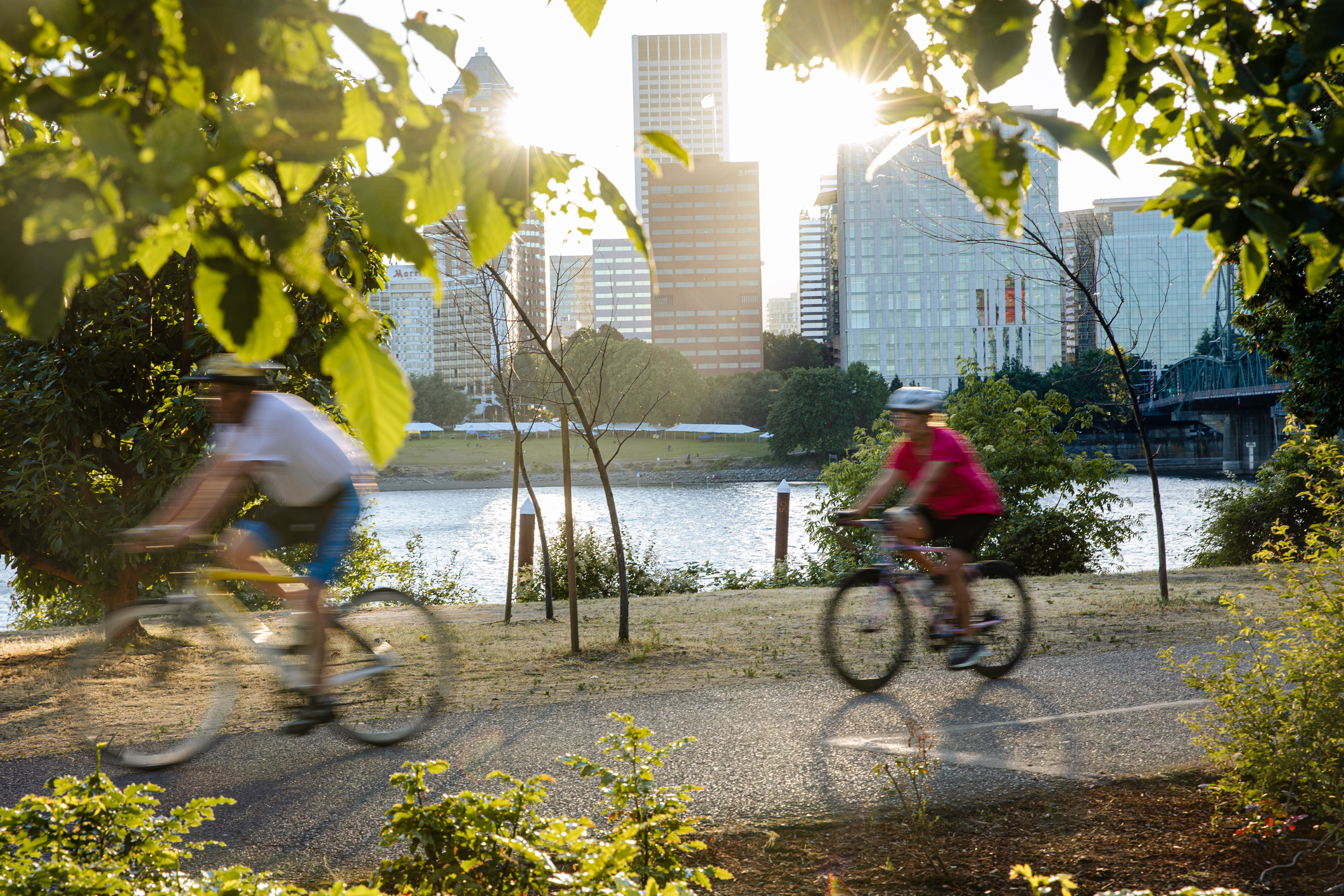Are you a municipal leader looking to expand resilient infrastructure to your hard surfaces like roads, parking lots, sidewalks, roof tops, and even the sides of buildings? NLC has been working with a group of 10 metro areas as part of the Cities for Smart Surfaces Project to help them transform surface infrastructure to mitigate climate change and improve resilience.
At their most basic, Smart Surfaces increase local climate resiliency through innovative technologies such as green roofs, solar panels, reflective pavements, porous pavements and carbon-sequestering concrete. Many Smart Surfaces complement each other and can jointly be deployed in infrastructure projects to maximize cost-effectiveness, reduce urban heat islands and flooding.
The initial benefit-cost analysis modeling for the 10 metro areas in the Cities for Smart Surfaces Project shows positive net and benefit-cost ratios for nearly all the Smart Surface interventions. To help offset upfront costs, cities, towns and villages can look at multiple federal funding streams, such as the Inflation Reduction Act (IRA) and Infrastructure Investment & Jobs Act (IIJA). Below is a list of key sources that could include Smart Surface deployment in a grant proposal or projects.
Federal Grants for Smart Surfaces
Climate Pollution Reduction Grant
Coordinated regional funds for projects to reduce greenhouse gas emissions.
Amount:
$5 billion from IRA awarded; contact your regional planning association for more details
Smart Surface Alignment:
Solar PV; green infrastructure; cool surfaces; energy retrofits
Environmental and Climate Justice Community Change Grant
Amount:
$3 billion from the IRA – open through Nov. 21
Smart Surface Alignment:
Tree canopies, bioretention systems (rain gardens, bioswales), permeable pavements, cool and green roofs
Resource:
Greenhouse Gas Reduction Fund
Financial assistance for clean technology deployment.
Amount:
$27 billion from IRA – awarded, opportunities for subawards
Smart Surface Alignment:
Permeable pavements, cool roofs, cool walls, solar PV
Low Carbon Transportation Materials
Funding for low-carbon materials that reduce greenhouse gas emissions in construction projects.
Amount:
$2 billion from IRA
Smart Surface Alignment:
Low-carbon materials, permeable pavements, combined cool paving/GHG sequestration technologies
Resource:
Promoting Resilient Operations for Transformative, Efficient, and Cost-Saving Transportation (PROTECT)
Funding to make transportation infrastructure more resilient to natural disasters.
Amount:
$8.7 billion from BIL
Smart Surface Alignment:
Porous pavements, bioretention systems (rain gardens, bioswales), reflective pavements, tree canopies
Rebuilding American Infrastructure with Sustainability and Equity (RAISE)
Funding to rebuild and repair infrastructure in urban and rural communities.
Amount:
$7.5 billion from IIJA
Smart Surface Alignment:
Cool and permeable pavements, solar PV canopy for bus stops, sidewalks and parking spaces, rooftop solar on transit centers, bioretention systems (rain gardens, bioswales), shaded landscaping of native trees through street trees
Reconnecting Communities Pilot (RCP) Grant Program
Grant funding that equitably and safely restores connection between communities.
Amount:
$1 billion from IIJA
Smart Surface Alignment:
Cool and permeable pavements, bioretention systems (rain gardens, bioswales), shaded landscaping of native trees through street trees
Building Resilient Infrastructure and Communities (BRIC)
Grant funding that helps reduce risk from natural disasters through mitigation.
Amount:
$1 billion from IIJA – NOFO expected Oct. 2024
Smart Surface Alignment:
Porous pavements, bioretention systems (rain gardens, bioswales), reflective pavements
How municipalities are already using federal funds for Smart Surfaces
In the Sacramento Valley, the City of Davis, CA won a $24 million PROTECT grant in April 2024. This is the largest grant the city has ever received, and it will be used to install cool pavement technologies as the city rebuilds 15 segments of roadways. In addition to helping to reduce the heat island effect, the funds will also help restore the road condition and improve safety for all mobility users.
Different levels of governments can also support municipal investment in Smart Surface infrastructure projects. For example, the Central Midlands Council of Governments (South Carolina) was awarded a nearly $9 million Climate Pollution Reduction Implementation Grant to help fund Smart Surfaces across 34 municipalities. The Smart Surfaces + Solar matching fund will fund Smart Surface projects that reduce the heat island effect, reduce greenhouse gas emissions and support regional workforce development. Funding from the grant will also be used to install municipal solar projects.
Getting started using federal funds for Smart Surface Infrastructure
Municipalities looking to integrate Smart Surfaces into their infrastructure projects should begin by looking at their list of upcoming infrastructure priority projects list and identify which ones could integrate Smart Surfaces. U.S. agencies want to see resilient infrastructure integration in applications, so even if a project originally wasn’t intended to include Smart Surfaces it is a great idea to revisit projects and see if they could before a federal application is sent in.












